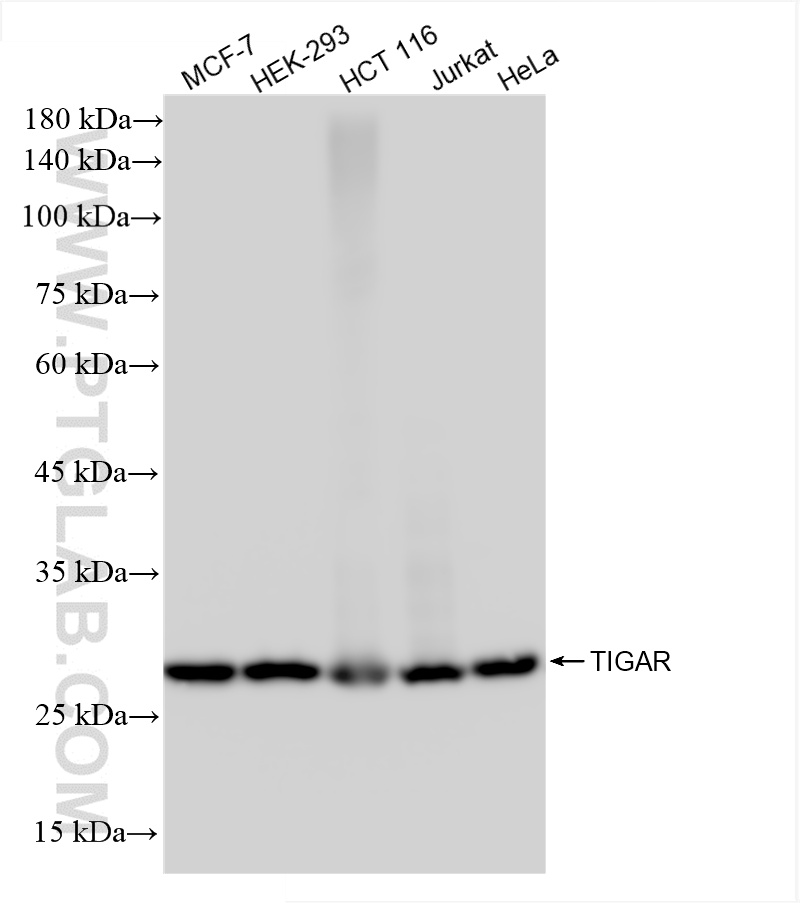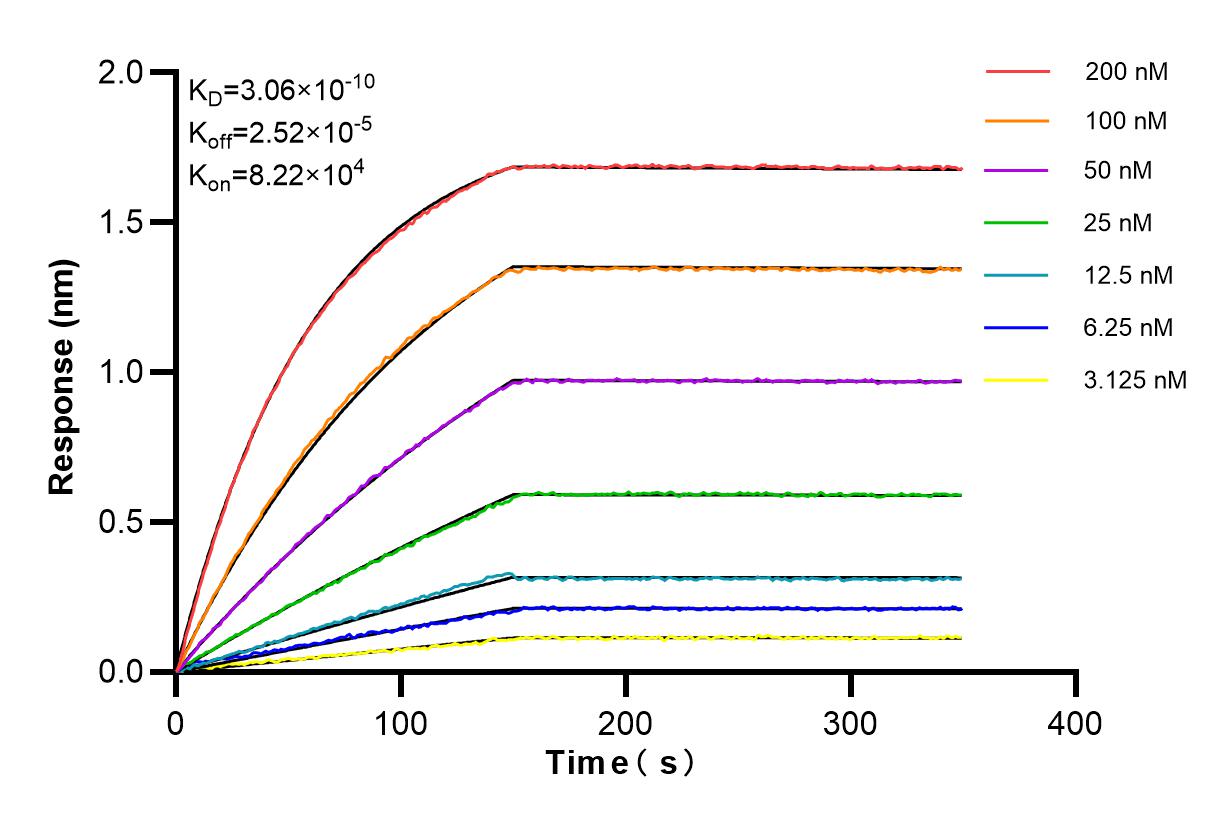验证数据展示
经过测试的应用
| Positive WB detected in | MCF-7 cells, HEK-293 cells, HCT 116 cells, Jurkta cells, HeLa cells |
推荐稀释比
| 应用 | 推荐稀释比 |
|---|---|
| Western Blot (WB) | WB : 1:2000-1:10000 |
| It is recommended that this reagent should be titrated in each testing system to obtain optimal results. | |
| Sample-dependent, Check data in validation data gallery. | |
产品信息
85052-4-RR targets TIGAR in WB, ELISA applications and shows reactivity with human samples.
| 经测试应用 | WB, ELISA Application Description |
| 经测试反应性 | human |
| 免疫原 | TIGAR fusion protein Ag17532 种属同源性预测 |
| 宿主/亚型 | Rabbit / IgG |
| 抗体类别 | Recombinant |
| 产品类型 | Antibody |
| 全称 | chromosome 12 open reading frame 5 |
| 别名 | C12orf5, 242625E7, TP53-induced glycolysis regulatory phosphatase, TP53-induced glycolysis and apoptosis regulator, Fructose-2,6-bisphosphatase TIGAR |
| 计算分子量 | 270 aa, 30 kDa |
| 观测分子量 | 30 kDa |
| GenBank蛋白编号 | BC012340 |
| 基因名称 | TIGAR |
| Gene ID (NCBI) | 57103 |
| 偶联类型 | Unconjugated |
| 形式 | Liquid |
| 纯化方式 | Protein A purification |
| UNIPROT ID | Q9NQ88 |
| 储存缓冲液 | PBS with 0.02% sodium azide and 50% glycerol , pH 7.3 |
| 储存条件 | Store at -20°C. Stable for one year after shipment. Aliquoting is unnecessary for -20oC storage. |
背景介绍
The TP53-induced glycolysis and apoptosis regulator (TIGAR), first reported in 2006, is a downstream target gene of p53 and an important factor involved in glycolysis and apoptosis . It is indispensable in metabolism and is involved in metabolic syndrome, including hyperglycemia, insulin resistance, alcoholic fatty liver and tissue ischemia. TIGAR is highly expressed in many cancer cells to promote cell survival.
实验方案
| Product Specific Protocols | |
|---|---|
| WB protocol for TIGAR antibody 85052-4-RR | Download protocol |
| Standard Protocols | |
|---|---|
| Click here to view our Standard Protocols |

